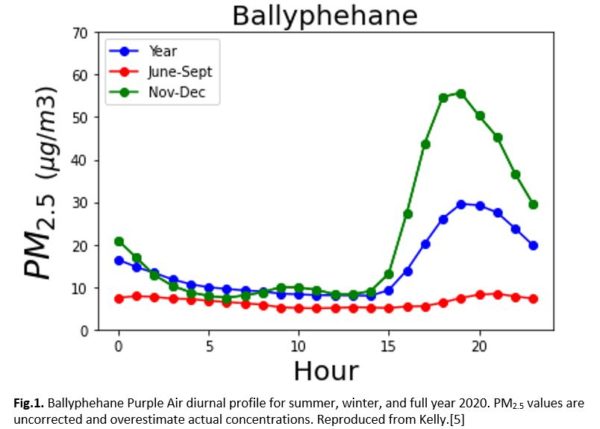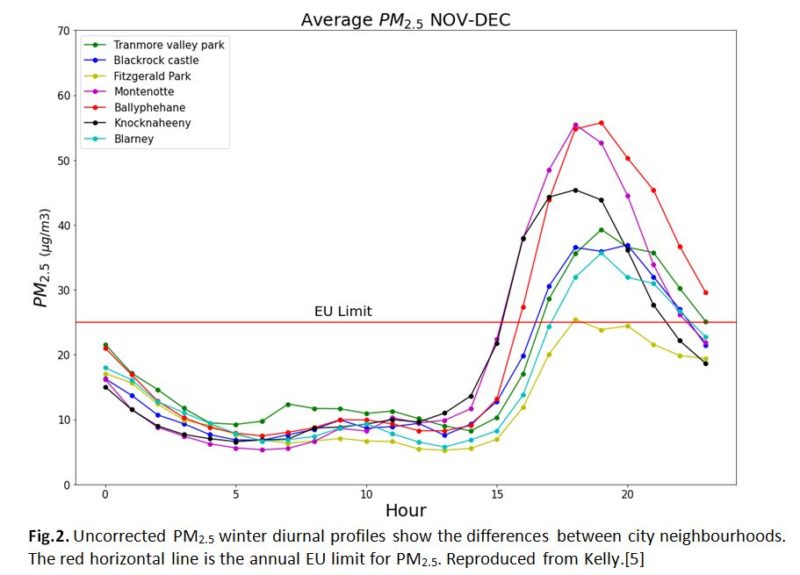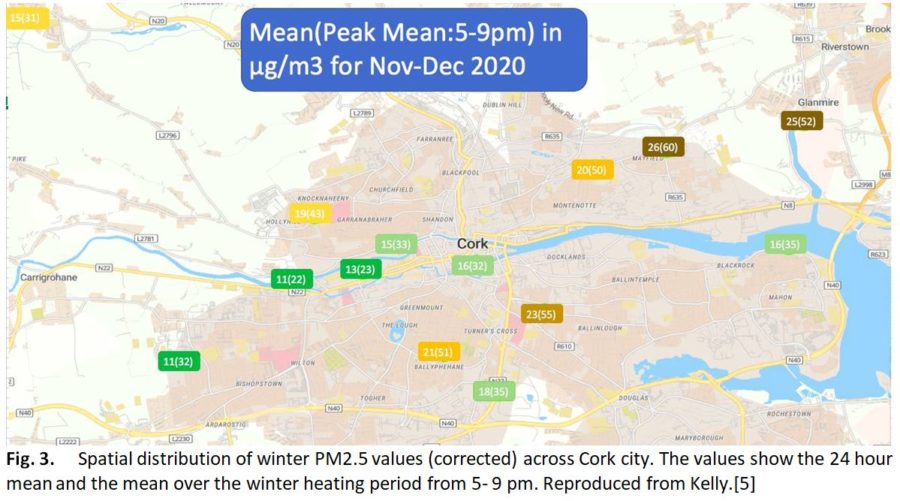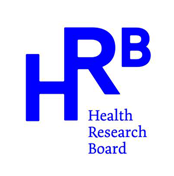Air pollution is by far the most serious public health problem caused by environmental factors[1] and causes over 400,000 premature deaths in Europe each year.[2] Although air quality in Ireland is mostly good, winter evenings are an exception. At these times, air quality deteriorates sharply as burning of solid fuels like coal, wood, and peat for domestic heating causes levels of particulate matter (PM) to spike. PM is the air pollutant of greatest concern and is associated with adverse health outcomes including cardiovascular mortality and morbidity, atherosclerosis, adverse birth outcomes, childhood respiratory disease, and declines in cognitive function.[3] The relationship between air quality and public health in Ireland was highlighted in a striking observation made by Dr Donal O’Shea, a consultant endocrinologist. Asked to consider Mary Harney’s legacy as health minister, he said, “In the context of positive impact on health, it was something she did in another department. The smokeless fuel legislation she introduced while in the Department of the Environment had a huge impact, and within one year winter hospital admissions for chest infections were significantly down.” [4]
The first step towards protecting public health from air pollution is reliable air quality monitoring. Monitoring is needed to identify pollution sources, to alert the public to high pollution episodes, and to develop evidence-based policies to improve air quality and protect public health. The Environmental Protection Agency (EPA) carries out regulatory monitoring through a nationwide network of 92 air quality stations. However, regulatory monitoring is costly—most smaller towns have no air quality monitoring at all; even within cities, some neighbourhoods may be far from the nearest air quality station.
The emergence of low-cost sensors for air pollutants provides an alternative approach to carry out extensive monitoring at moderate cost. This is the approach that Cork City Council took to develop Ireland’s first low-cost air quality network, in partnership with UCC’s Centre for Research into Atmospheric Chemistry. The council’s network uses Purple Air sensors (costing about €200 each) for PM measurements. The network has 14 PM sensors distributed across Cork city; in comparison, there are 4 EPA regulatory monitoring sites in the city. Data quality from low-cost sensors is often a concern. We find that Cork’s Purple Air sensors are highly correlated with regulatory instruments but need correction to bring them into good agreement with regulatory instruments.
So, what does Cork’s low-cost network tell us about local air quality? First, it shows the well-known contrast between summer and winter air quality. Summer air quality is mostly good but winter air quality is dominated by a sharp increase in PM levels from late afternoon due to solid fuel heating. Second, the sensor network reveals large spatial differences in air quality across the city. The daily maximum concentration of PM2.5 (particles smaller than 2.5 micron) in the most polluted neighbourhoods was more than double the maximum concentration elsewhere. Preliminary analysis suggests that these polluted sites occur in areas with higher levels of deprivation, indicating that the populations of these areas rely heavily on solid fuel heating and are exposed to poorer air quality as a result. This feature of local air quality is not picked up in the centrally located cluster of regulatory monitoring stations.
A third observation is that PM2.5 levels vary erratically over short time scales on winter evenings. This observation is seen in the short-term (10 minute) variance of Purple Air data from an hourly smoothed baseline. The variance occurs only in the evening heating period and is most pronounced in residential areas rather than the city centre. We attribute this variability to passing plumes from individual household fires. This observation shows the importance of local, individual sources to air quality. It is likely representative of much personal exposure to air pollutants. With an hourly reporting period, the EPA network does not pick up this feature.
Cork City Council’s network illustrates how low-cost sensor networks complement regulatory monitoring of PM. Low-cost sensors allow extensive coverage, identification of highly polluted areas, and raise public awareness about air quality. Such awareness raising is vital to build support for measures to improve air quality, including bans on highly polluting fuels and adoption of cleaner heating technology. In addition, the habitual use of solid fuels for auxiliary heating, even in Ireland’s relatively wealthy second city, remains a public health challenge, indicating that public information campaigns are needed to reduce habitual use of solid fuels.



Looking to the future of air quality monitoring, it is worth noting that machine learning of air quality and meteorology is now being applied to air quality forecasting. This is an exciting development that could lead to advance public notifications of poor air quality. Such forecasts could also be a tool to modify behaviour — for instance, asking households to forego lighting fires when air quality could become hazardous. Such changes would lead to significant improvements in air quality and public health.
- J. Lelieveld, J. S. Evans, M. Fnais, D. Giannadaki, and A. Pozzer, “The contribution of outdoor air pollution sources to premature mortality on a global scale,” Nature 525 (7569), 367–371 (2015).
- EEA (European Environment Agency), The European Environment — State and Outlook 2015 — Synthesis Report (2015).
- World Health Organisation, Review of Evidence on Health Aspects of Air Pollution – REVIHAAP Project (2013).
- M. McDonagh, “What’s the verdict on Harney?,” Irish Times (January 25, 2011).
- D. Kelly, Final Year Project Report: An Assessment of PM2.5 Pollution in Cork City Using Low Cost Sensors. School of Chemistry, University College Cork (2021).
|
| Dr Dean Venables is a lecturer in physical and environmental chemistry in the School of Chemistry and Environmental Research Institute at University College Cork. He obtained his BSc and MSc degrees from Rhodes University (South Africa) and his PhD from Yale University (USA) in 2001 under Prof. Charles Schmuttenmaer. His PhD research investigated the properties of liquid mixtures using ultrafast terahertz spectroscopy to probe the dynamics of water and polar solvents. Following his PhD, he developed near-infrared frequency standards using external cavity diode lasers at the National Metrology Laboratory (South Africa). He moved to Ireland in 2003 to study atmospheric chemistry. His research focuses on atmospheric chemistry, air quality, and instrument development for quantifying trace gases and characterising aerosols. This work involves a combination of field, chamber, and instrument development work. The Venables group have participated in numerous national and international campaigns in Ireland, Canada, the USA, Germany, Spain, and China. His research has been funded by Science Foundation Ireland, the Environmental Protection Agency, and the EU FP7 and H2020 programmes. As of early 2020, his work had been cited over 1800 times and he had an h-index of 23 (Google Scholar). He is a session co-convener at the European Geosciences Union General Assembly and is an editor of a forthcoming monograph on atmospheric spectroscopic methods from Elsevier. |


